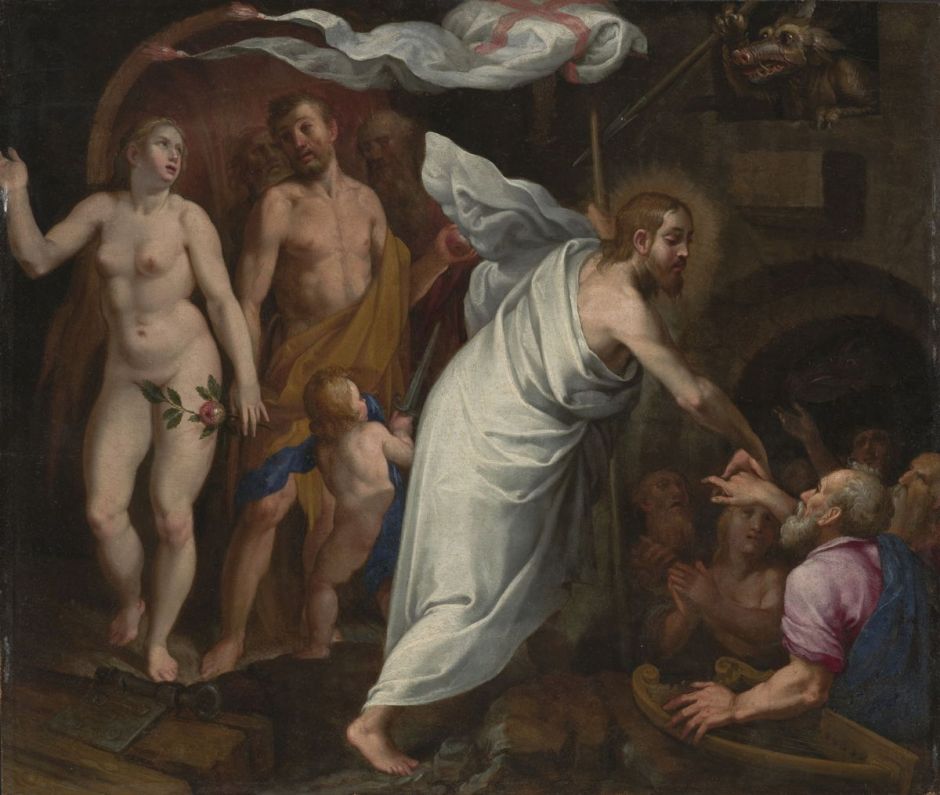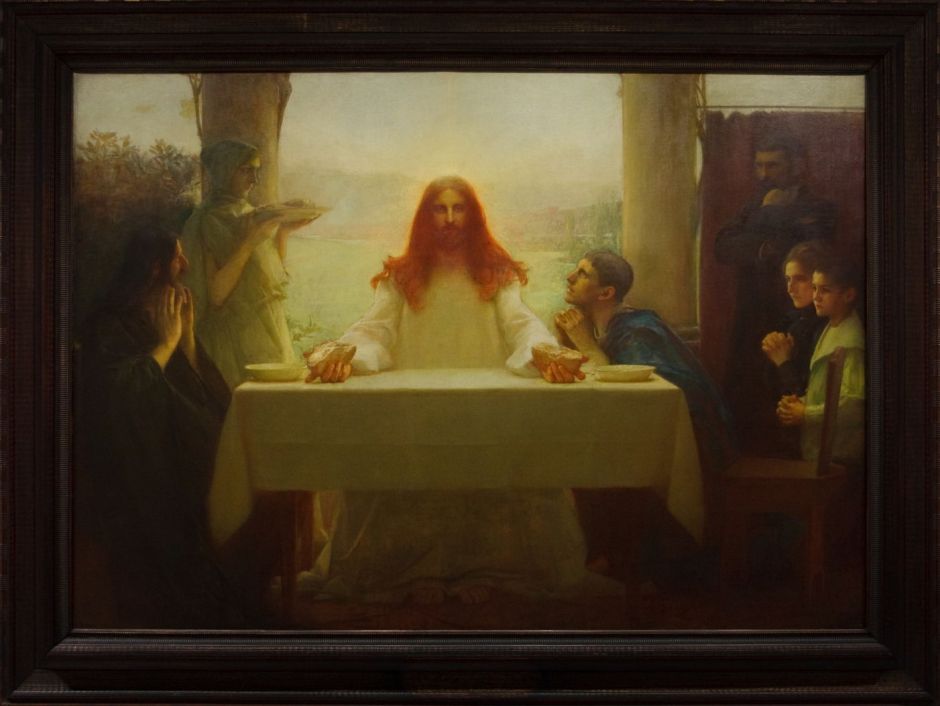It has always puzzled me that the high-point of Christian Easter, the Sunday marking the Resurrection, has never attracted the same attention in paintings as the events of Good Friday before it. As I’ve recently looked at paintings of Mary Magdalene’s role in accounts of the Resurrection, today I focus on two events that have been popular themes in art in the past, but tend to get overlooked in more recent times: Christ’s triumphant descent into Hell and its ‘harrowing’, and his supper with disciples in Emmaus.
The descent of Christ into Limbo and his Harrowing of Hell, or Anastasis, was a popular theme in religious painting until the end of the Renaissance, and would have been familiar to those reading Dante’s Inferno, which describes this region on the edge of Hell holding the spirits of the righteous who had died before the Crucifixion.

Beccafumi’s Descent of Christ into Limbo from 1530-35 is an early and characteristic account of Christ bringing salvation to these spirits of the righteous. Christ is shown bearing the standard of Resurrection, a red cross, as he releases those who had been trapped in Limbo.

Jacopo Tintoretto’s Descent into Limbo, from 1568, shows Christ flying in glory through a large hall under an arched roof, accompanied by two angels. He details three figures at the lower right, indicating that they represent donors or sponsors of the painting.

Just before the end of the sixteenth century, Jan Brueghel the Elder collaborated with Hans Rottenhammer in Christ’s Descent into Limbo (1597). This is set in a far grander vision of a dungeon at the edge of a fiery underworld that could have been painted by Hieronymus Bosch.

Just a few years later, Pablo de Céspedes painted Christ’s Descent into Limbo (c 1600). By the end of the seventeenth century, this phase of the Resurrection appears to have been largely forgotten, and no longer painted, except in the context of Dante’s Inferno.
Paintings of the supper at Emmaus enjoyed popularity over a similar period, although they have been revived occasionally since. They’re based on the account in the gospel of Luke, in which the resurrected Christ met two disciples walking on the road to Emmaus. The disciples urged him to stay and have supper with them, and when the bread was broken, they recognised him as the risen Christ.

Jacopo Tintoretto’s Supper at Emmaus from about 1542 uses a formal arrangement of the table, with Christ sat in the middle, directly underneath a pillar marking the midline of the canvas, and the two disciples sat to each side, nearer the viewer. To this, he adds a woman and man serving the meal, and another couple of extras to turn the simple meal into a more substantial gathering. There’s even a cat sat watching from the lower left foreground.
The chequered floor adds depth by perspective, and there are diagonals formed by the walking sticks of the two disciples, making a narrative link to their recent journey to Emmaus. Tintoretto places a glass goblet on the table to demonstrate his skills at rendering that.

Paolo Veronese’s painting from about 1559 contains separate passages to cue its narrative: on the far left is an asynchronous ‘flashback’ referring to the journey to Emmaus. Christ is in the centre of the painting, identified by his halo, and in the midst of breaking bread. With him at the table are the two bearded figures of the disciples, dressed as pilgrims and bearing staves. On Christ’s right is a servant, acting as waiter to the group.
This leaves us to account for the other onlookers: three men, a woman, five boys, four girls, and a baby, together with assorted pet animals. The adults and children are dressed in contemporary costume, rather than the robes of the early first century, and it’s that which makes it clear this is also a family portrait, part of the narrative of the life of an aristocratic Italian family of the day.

Caravaggio’s Supper at Emmaus from 1601 is perhaps the most famous of these paintings today. Commissioned that year by the brother of a cardinal, it shows the moment of Christ’s revelation of his identity to the two pilgrim disciples, with lighting carefully arranged to make the best of cast shadows, although examination shows that they’re not entirely consistent.
Caravaggio painted a second version five years later, following which this theme seems to have been largely forgotten until the last few years of the nineteenth century.

In 1896-97, Pascal Dagnan-Bouveret revived it in his Christ and the Disciples at Emmaus, using more contemporary figures and looking into the light. This gives Christ a heavenly radiance, lighting his hair in particular, as a true image of the Resurrection.
Happy Easter, and may you find peace.

